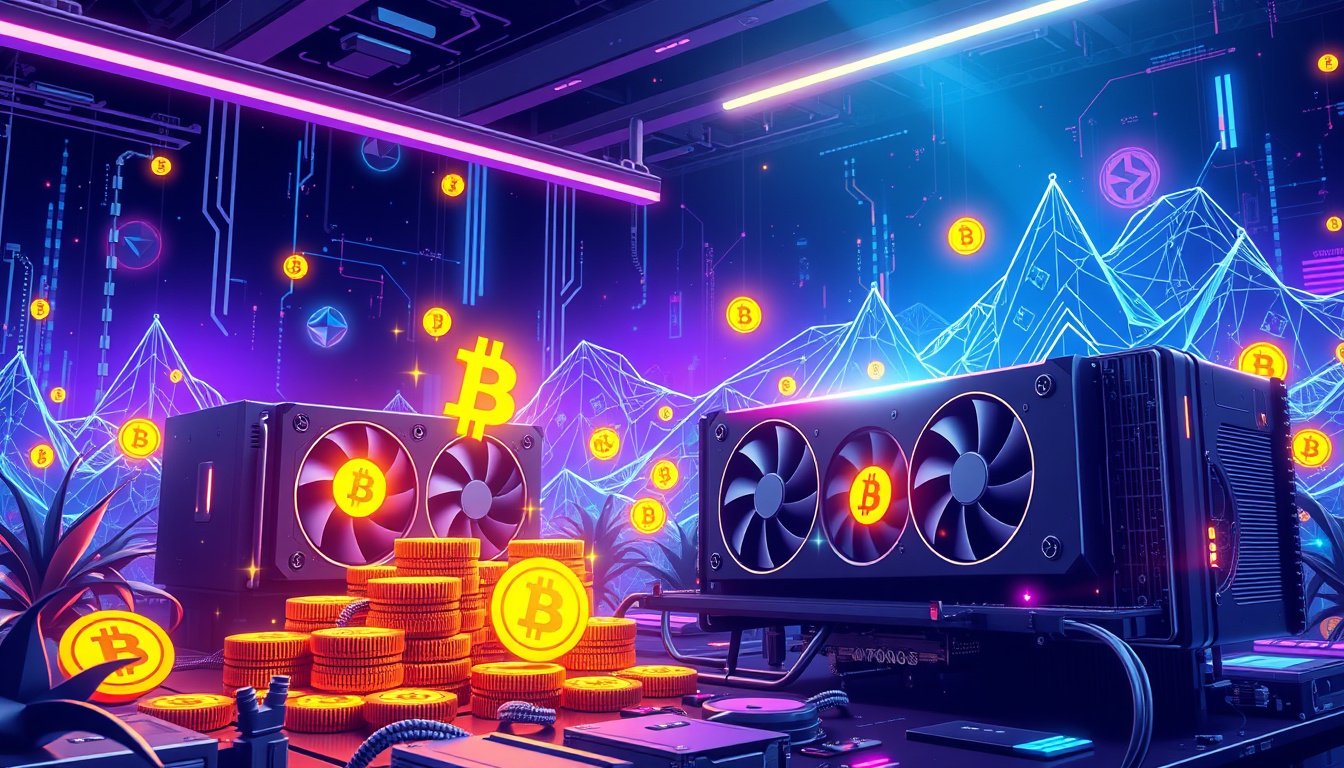Unleashing Potential: A Comprehensive Guide to GPU Miners for Maximum Crypto Performance
In the world of cryptocurrency, GPU mining plays a pivotal role in the validation and generation of new coins. This guide aims to demystify the process of GPU miners, outlining the best practices, hardware choices, profitability considerations, and environmental impacts associated with this dynamic sector.
What is GPU Mining?
GPU mining utilizes Graphics Processing Units (GPUs) to perform complex calculations that ensure the integrity and security of cryptocurrency transactions. Unlike traditional CPUs, GPUs are highly efficient at processing multiple tasks simultaneously, making them better suited for mining cryptocurrencies that rely on the proof-of-work algorithm.
The Mechanism of Mining
In GPU mining, miners compete to solve complex cryptographic puzzles to validate transactions on a blockchain. Successful miners receive cryptocurrency rewards, which are contingent upon both their computational power (hashrate) and the current difficulty of mining the respective currency. The primary cryptocurrencies mined using GPUs include Bitcoin (BTC), Ethereum (ETH) (prior to its transition to proof-of-stake), and various altcoins.
Choosing the Right GPU
As the GPU mining landscape has evolved, so has the technology and variety of available GPUs. Here are some of the best-performing GPUs as of now:
- Nvidia RTX 3090: Known for its high hashrate and power efficiency, it remains a top choice for serious miners.
- Nvidia RTX 3080 Ti: Striking a balance between performance and cost, it yields substantial returns for many algorithms.
- AMD RX 6800 XT: An excellent choice for miners who prefer AMD’s architecture, providing competitive performance and energy efficiency.

When selecting a GPU, factors like hashrate, power consumption, and initial cost are crucial. Additionally, miners should consider the compatibility with their mining rig and the specific cryptocurrencies they aim to mine.
Understanding Profitability
The profitability of GPU mining is influenced by multiple factors including:
- Hashrate: The amount of computational power a miner can deliver. Higher hashrates typically correlate to higher returns.
- Electricity Costs: Mining is energy-intensive, and the cost per kilowatt-hour can dramatically affect profit margins. Regions with lower energy costs are more favorable for mining operations.
- Market Dynamics: Cryptocurrency prices fluctuate wildly. A downtrend can quickly render mining unprofitable if costs outstrip earnings.
Return on Investment (ROI)
Miners often calculate their ROI based on the projected earnings from mined coins against the total investment in hardware and operating costs. Various online calculators can assist miners in estimating daily profits based on current market conditions and electricity costs.
Environmental and Security Concerns
As the popularity of GPU mining has surged, so have the discussions surrounding its environmental impact. Mining operations consume substantial electricity, much of which is derived from fossil fuels. Reports indicate that a significant percentage of energy used by Bitcoin mining has a detrimental environmental footprint, contributing massive CO2 emissions.
Cybersecurity also poses another risk. Malware attacks specifically target GPU resources to covertly mine cryptocurrencies using compromised systems without the owner’s knowledge. Such security breaches highlight the necessity of employing robust cybersecurity measures alongside mining operations.
The Future of GPU Mining
The shift toward renewable energy sources can mitigate some environmental concerns associated with cryptocurrency mining. Mining firms are increasingly investing in solar, wind, and other sustainable energy solutions to power their operations more responsibly.
Moreover, with the crypto market’s evolution, miners are adapting. For instance, the conclusion of Ethereum mining operations marked a significant transition whereby many miners are transitioning to other altcoins or seeking alternative uses for their mining equipment.
Conclusion
GPU mining remains an essential component of the cryptocurrency ecosystem, providing the computational backbone needed for transaction validation and profit generation. By staying informed about the latest hardware, market trends, and environmental considerations, both seasoned miners and newcomers can optimize their mining operations for maximum efficiency and profitability. As technology advances and regulatory landscapes shift, the resilience and adaptability of GPU miners will determine their success in a rapidly changing environment.
